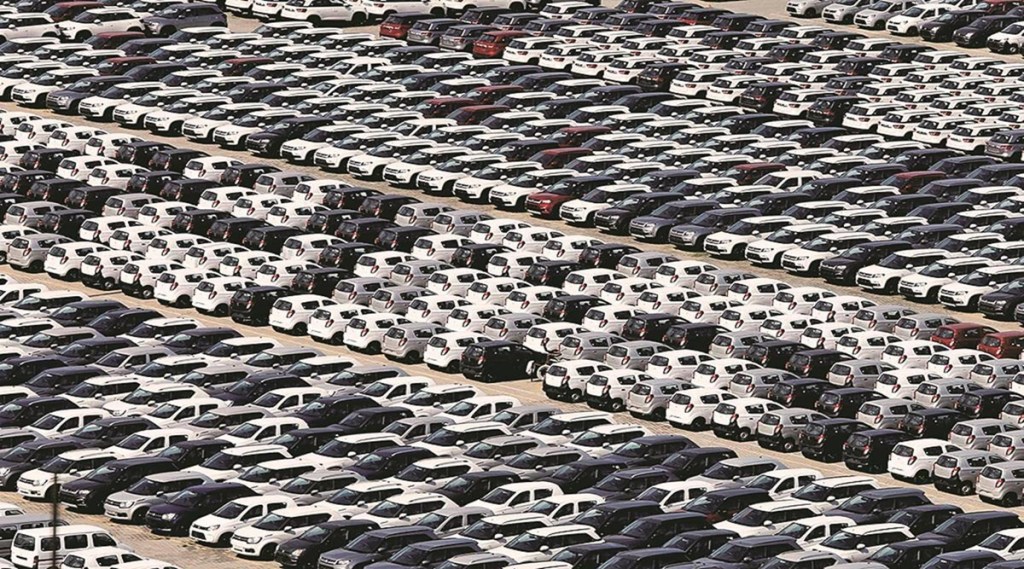Companies in the construction, real estate, FMCG, automobile, and aviation business are caught in a bind with the commodity prices estimated to rise further as a fallout of the Ukraine crisis. If they pass on the rising input prices to the consumers, demand may get hit as several rounds of price hike have been undertaken earlier; if they don’t, their margins will continue to be under pressure in the next quarter.
Take the case of Tata Motors. During the December quarter, high commodity inflation had impacted the company’s consolidated Ebitda (earnings before interest, tax, depreciation and amortisation) which declined 34% year-on-year to Rs 7,395 crore, while margins dropped a sharp 460 basis points year-on-year to 10.2%.
In its management commentary, the company had factored in the worries around inflation but had hoped the semiconductor shortage would improve and so would volumes. However, with the Russian invasion of Ukraine, the auto sector is unlikely to get any relief from semiconductor shortage. That’s because Russia and Ukraine produce around 75% of the neon gas used to manufacture semiconductors. If the input cost pressure does not ease, the company may have to look at price hikes in April, which may impact demand.
So far in the current fiscal, the company has hiked prices four times.
High commodity inflation had also impacted the margins of Maruti Suzuki in the December quarter with its Ebitda declining 30% on a year-on-year basis. Margins had declined 278 basis points y-o-y to 6.7% during the quarter.
According to estimates drawn by analysts at Kotak Institutional Equities, the raw material basket prices for auto manufacturers have increased by 90-160 basis points till date in the January-March quarter and 170-360 bps on current spot prices from the December quarter levels due to the sharp jump in aluminium and precious metal prices.
Kotak has estimated that gross margins of Maruti Suzuki and two-wheeler manufacturers would get adversely impacted as aluminium and precious metal prices have surged by more than 30% from December quarter average levels. Further, price hikes, especially in the two-wheeler segment will be challenging given the weak demand scenario.
Similarly, the aviation sector will be badly hit by the ongoing surge in crude oil prices which are leading to record high jet fuel rates. Aviation turbine fuel (ATF) prices were hiked for the fifth time in the current year, taking it to a new high, with the latest increase coming in on March 1.
Prices went up by Rs 3,010.87 per kilolitre or 3.22% to Rs 93,530.66 per kl in Delhi. Beginning January, ATF prices have increased by over Rs 19,000. According to analysts, with the ongoing Russia-Ukraine crisis, prices see no sign of abatement, which will impact the margins of airline companies in the fourth quarter.
The story is the same in the other consumer-facing industries. Steep raw material inflation continued to weigh on the margins of paint companies, for instance. During the December quarter, Asian Paints saw a 4% input price inflation. The company took a 15% product price hike during the quarter and gross margins improved 180 bps quarter-on-quarter to 37.5%. Effective price increase taken during the nine months of FY22 is 22-23% which have never been taken in the company’s recent history.
Berger Paints also took 24% cumulative price hikes during the nine-month period. Other players including Kansai and Akzo have also taken 17-20% price hikes during the same period. Analysts say that rising input prices will continue to remain a margin headwind in the coming quarters for these companies.
The real estate developers are already a worried lot with the sharp rise in prices of key raw materials like steel and cement, as they are finding it hard to pass on the cost escalations to customers for fear of losing them.
A recent CII-Anarock survey had found that an under 10% increase would have a moderate-to-low impact, while an increase of over 10% would have more profound repercussions on the buyer sentiment. However, if the commodity price inflation goes unabated, some developers may look at increasing the price of new launches in the range of 10-15%.
Niranjan Hiranandani, managing director, Hiranandani Group, told FE, “In the wake of geopolitical tensions, market uncertainties, disruption in supply chain and record high crude oil cost, the prices of new launches across the markets is estimated to have escalated by 10%-15% varying on geographies, size and scale of the projects.” He said that the sharp rise in raw material prices is impacting profit margins with disruption in logistics, timely deliverables, and absorption of hiked cost.
Getamber Anand, chairman and MD, ATS Group, said the problem is not in new sales but the rising inflation in commodities. “Today, steel is at Rs 80,000 a tonne and it is not going to come down in a hurry. Cement is at Rs 400 a bag,” he said.


